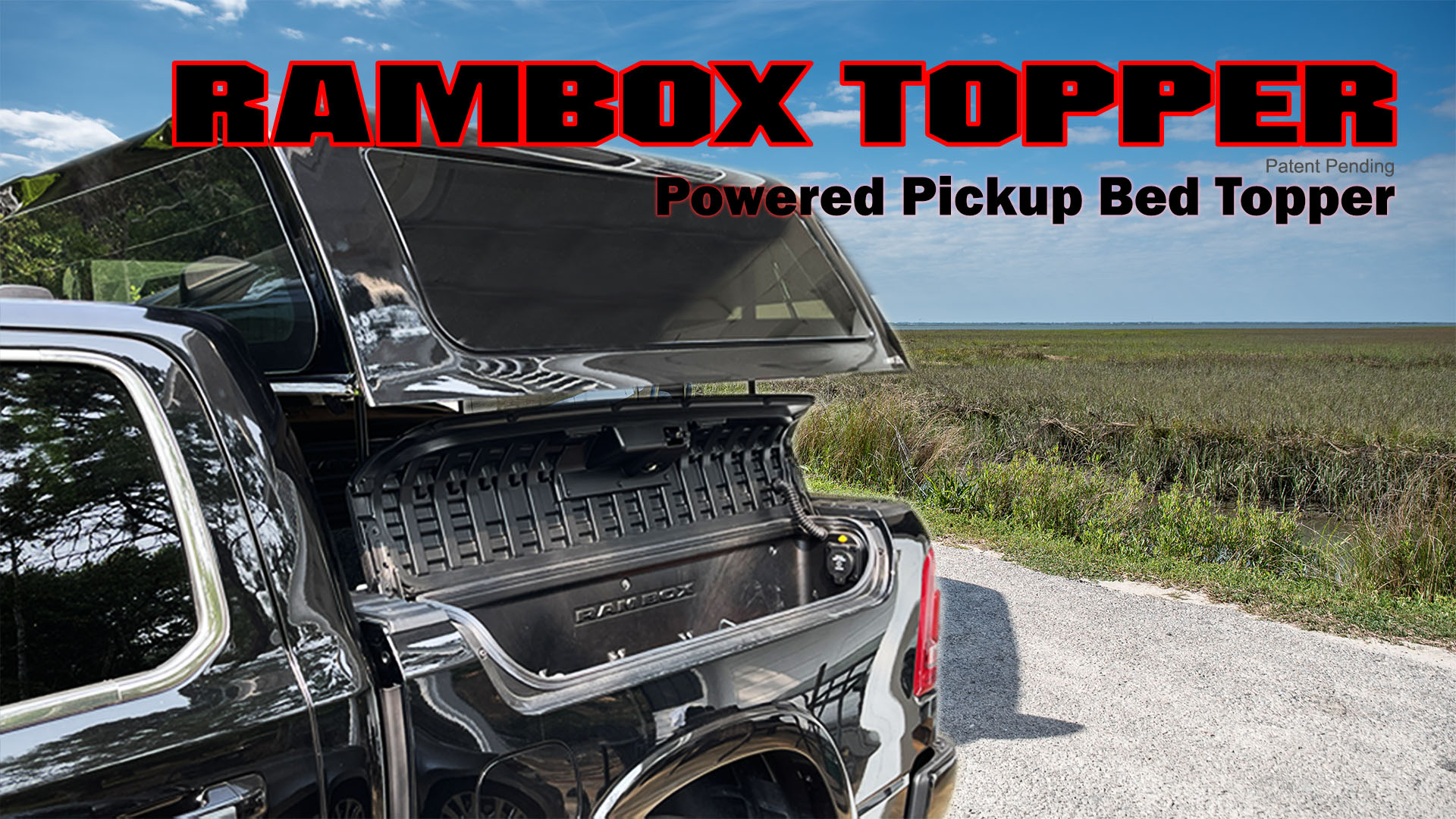5thGenRams Forums
You are using an out of date browser. It may not display this or other websites correctly.
You should upgrade or use an alternative browser.
You should upgrade or use an alternative browser.
Will the V6 run all the time?
- Thread starter NJT3
- Start date
No, it will not run all the time, just when needed to charge the battery while driving. The first 140 or so miles will be battery only. Depending on the mode you put it in (ie tow mode) will set the amount the battery can be discharged before the V6 starts up to charge the battery and also can send power directly to the EV motors. Tow mode will have a larger buffer set so the battery will discharge down to 40% or somewhere around there before the engine starts up, other modes will allow the battery to discharge further (although the interview with the engineer I saw didnt state that discharge percentage, just tow mode).Saw something that highlighted Ram video stating the V6 will run all the time to charge the battery.. Doesn't that defeat the purpose. Hopefully can be of until his the recharge threshold.
go-ram
Ram Guru
- Joined
- Jun 30, 2018
- Messages
- 837
- Reaction score
- 759
- Points
- 93
- Age
- 65
The YT video below gives a more detailed description with the latest engineering-related press conference Ram did on the Ramcharger back in May. Ram has certified the Ramcharger to the J2807 towing standard, towing 14,000 lbs, starting at the bottom of the Davis Dam grade with the battery fully depleted, with the truck's AC running, in 100 F ambient temperature. Yes, the V6-powered generator is running the entire time given that the battery was fully depleted at the start and it was a full 21,000 GCWR load (truck plus trailer). In a separate test up the Eisenhower grade in Colorado, it not only towed the 14,000 lb trailer up that grade, it maintained a 35% charge state of the battery by the time it got to the top.My guess is that if you are towing heavy, in real mountains, it very well could run all or at least most of the time. Especially if you have already run the batteries down to 50% or less or something like that.
Aside from a worst-case scenario like that, it definitely SHOULD not run all the time. If we presume that it can charge from the on-board generator fast enough to keep the truck going at full power while worst-case towing, then it definitely should be able to maintain the batteries in normal driving without having to run all the time.
I am really stoked to get a Ramcharger - after they have been on the market for at least 2 years. Being able to do all my day-to-day around-town driving without ever burning a drop of gas would be nice. And then be able to do my usual weekend road trips without any range anxiety. Oh, and that 600+ HP performance.... THAT is the kind of "EV" I would like.
In this Truck Show Podcast, Sean Holman gives a very detailed accounting:
Start of the segment on Ramcharger:
Specifically the description of the J2807 testing:
Last edited:
StuartV
Ram Guru
That video didn't really give much if anything new. Not in detail. And it is 4 months old.
I still don't know:
- will it pull that grade that they talk about, with a 14K# load, if you start with only 35% battery charge? Or will it only do it if you start up the grade with a fully charged battery? And then get to the top with 35%?
- the actual details on the drive modes. He listed Electric+, Eco, and E-save. And then said there are other modes. But, what are the details on each of those? He said Electric+ runs on battery only - until the battery is depleted, and then the generator kicks in. Okay. But at what actual battery SOC does it kick in? 20%? 35%? And is it the same when you're in Tow/Haul mode versus not in T/H mode?
- He said Eco was pretty much self-explanatory (which it is not), so he then proceeded on without explaining it.
- And E-save? He said that saves your battery and you run on gas. So, it literally just drives you on the electricity coming from the generator and you never use any battery at all? Or does it use the battery, but when it gets to some percentage, then the generator kicks on to top it back up? So, what? The gen kicks on when the battery drops to 95%? To 90%? To 50%?
- How does Tow/Haul mode affect any of these drive modes?
- What does Sport mode actually do?
- If you're pulling the max load of 14K # and driving cross country, how far can you actually drive while still having full power available? Will it always have full power, if you just stop and fill up with gas, but never connect a charger? Or will the battery eventually drop to the point where, without a charge, you're just towing on gas power, where he DID say that, in that case you will experience "reduced power"?
- If you're towing like that on flat ground, maybe the gen runs enough to keep the batteries charged and you always have full power available. But, what about towing in the mountains, day after day, where you can't charge? How long will it go like that before you have to charge up in order to have full power available?
I am stoked about the Ramcharger and I think it will be pretty much perfect for ME and how I use my truck. But, it is disappointing that these details are not out and I don't see any reports where the "journalists" are even asking these detailed questions.
I still don't know:
- will it pull that grade that they talk about, with a 14K# load, if you start with only 35% battery charge? Or will it only do it if you start up the grade with a fully charged battery? And then get to the top with 35%?
- the actual details on the drive modes. He listed Electric+, Eco, and E-save. And then said there are other modes. But, what are the details on each of those? He said Electric+ runs on battery only - until the battery is depleted, and then the generator kicks in. Okay. But at what actual battery SOC does it kick in? 20%? 35%? And is it the same when you're in Tow/Haul mode versus not in T/H mode?
- He said Eco was pretty much self-explanatory (which it is not), so he then proceeded on without explaining it.
- And E-save? He said that saves your battery and you run on gas. So, it literally just drives you on the electricity coming from the generator and you never use any battery at all? Or does it use the battery, but when it gets to some percentage, then the generator kicks on to top it back up? So, what? The gen kicks on when the battery drops to 95%? To 90%? To 50%?
- How does Tow/Haul mode affect any of these drive modes?
- What does Sport mode actually do?
- If you're pulling the max load of 14K # and driving cross country, how far can you actually drive while still having full power available? Will it always have full power, if you just stop and fill up with gas, but never connect a charger? Or will the battery eventually drop to the point where, without a charge, you're just towing on gas power, where he DID say that, in that case you will experience "reduced power"?
- If you're towing like that on flat ground, maybe the gen runs enough to keep the batteries charged and you always have full power available. But, what about towing in the mountains, day after day, where you can't charge? How long will it go like that before you have to charge up in order to have full power available?
I am stoked about the Ramcharger and I think it will be pretty much perfect for ME and how I use my truck. But, it is disappointing that these details are not out and I don't see any reports where the "journalists" are even asking these detailed questions.
StuartV
Ram Guru
Okay, the 2nd video gave a bit more info. Thanks for that.
He said that on the long tow up that grade in CO, towing 14K#, and only running on the gas engine, it was able to pull the grade AND maintain the battery at 35% SOC.
They have also said that the ICE/generator can put out 202 kW, peak. That is 270 HP.
That means, if it's towing and keeping the battery at a static SOC (i.e. 35%), it is only 270 HP available from the generator that is powering that truck/trailer up that hill.
I think anyone who has towed much knows that 270 HP is not much power to pull 14K # up a long, steep grade.
I wonder about the speed specs of that "successful tow". Did they pull 14K# up that grade, on ICE only, and maintain the speed limit? Or did it go up at 20 MPH the whole way?
He said that on the long tow up that grade in CO, towing 14K#, and only running on the gas engine, it was able to pull the grade AND maintain the battery at 35% SOC.
They have also said that the ICE/generator can put out 202 kW, peak. That is 270 HP.
That means, if it's towing and keeping the battery at a static SOC (i.e. 35%), it is only 270 HP available from the generator that is powering that truck/trailer up that hill.
I think anyone who has towed much knows that 270 HP is not much power to pull 14K # up a long, steep grade.
I wonder about the speed specs of that "successful tow". Did they pull 14K# up that grade, on ICE only, and maintain the speed limit? Or did it go up at 20 MPH the whole way?
You do realize HP claims on electric motors are not the same as HP from an ICE? Electric motors are pure torque. As long as they are provided the amps they need to pull the load, they will pull the load. You're focusing too much on the HP number. If it can pull the grade and keep the battery at 35%, then the generator is putting out the needed amperage to power the motors.Okay, the 2nd video gave a bit more info. Thanks for that.
He said that on the long tow up that grade in CO, towing 14K#, and only running on the gas engine, it was able to pull the grade AND maintain the battery at 35% SOC.
They have also said that the ICE/generator can put out 202 kW, peak. That is 270 HP.
That means, if it's towing and keeping the battery at a static SOC (i.e. 35%), it is only 270 HP available from the generator that is powering that truck/trailer up that hill.
I think anyone who has towed much knows that 270 HP is not much power to pull 14K # up a long, steep grade.
I wonder about the speed specs of that "successful tow". Did they pull 14K# up that grade, on ICE only, and maintain the speed limit? Or did it go up at 20 MPH the whole way?
StuartV
Ram Guru
You do realize HP claims on electric motors are not the same as HP from an ICE? Electric motors are pure torque. As long as they are provided the amps they need to pull the load, they will pull the load. You're focusing too much on the HP number. If it can pull the grade and keep the battery at 35%, then the generator is putting out the needed amperage to power the motors.
You do realize that Power is Power, no matter what units you express it in? Kilowatts and Horsepower are just different units measuring the same thing. Power is Work done per unit of time. And Work is Force applied over a distance.
Horsepower (a specific unit of Power) is equal to Torque (in ft-lbs) * RPMs / 5252.
You do realize that 202 kilowatts and 270 HP are the same amount of Power, right?
You do realize that it is Power that moves stuff up a hill, right? How many times per minute that work can be done.
So, if the batteries are not contributing anything, the power output of the motor is all the power that is available to move that load. And that is claimed to be 202 kW, which is 270 HP.
Whether you are putting 270 HP through an electric motor or through a transmission, it's still only 270 HP.
You don't get something for nothing. 270 HP can only do a certain amount of work per minute - which is less than the work per minute than 271 HP can do.
Torque is the Force part of the Work. Work per unit of time is the Power.
270 HP is 270 HP, no matter where it comes from (an ICE or an electric motor).
The only way 270 HP can move a load up a hill faster with an electric motor than with a transmission is if the electric motor is more efficient than the transmission. I.e. if it outputs a higher percentage of its input than the percent of input that a transmission outputs.
So you don't think an electric .or is more efficient than a transmission with clutches that slip and fluid and rotational weight, that also has to spin the differential with ring/pinion, friction, and fluid to spin around. I don't claim to be a genius but you pretty much proved my point with your last paragraph.You do realize that Power is Power, no matter what units you express it in? Kilowatts and Horsepower are just different units measuring the same thing. Power is Work done per unit of time. And Work is Force applied over a distance.
Horsepower (a specific unit of Power) is equal to Torque (in ft-lbs) * RPMs / 5252.
You do realize that 202 kilowatts and 270 HP are the same amount of Power, right?
You do realize that it is Power that moves stuff up a hill, right? How many times per minute that work can be done.
So, if the batteries are not contributing anything, the power output of the motor is all the power that is available to move that load. And that is claimed to be 202 kW, which is 270 HP.
Whether you are putting 270 HP through an electric motor or through a transmission, it's still only 270 HP.
You don't get something for nothing. 270 HP can only do a certain amount of work per minute - which is less than the work per minute than 271 HP can do.
Torque is the Force part of the Work. Work per unit of time is the Power.
270 HP is 270 HP, no matter where it comes from (an ICE or an electric motor).
The only way 270 HP can move a load up a hill faster with an electric motor than with a transmission is if the electric motor is more efficient than the transmission. I.e. if it outputs a higher percentage of its input than the percent of input that a transmission outputs.
Electric+ will likely keep the generator turned off, in all conditions, until the battery reaches its minimum allowed SoC.That video didn't really give much if anything new. Not in detail. And it is 4 months old.
I still don't know:
- will it pull that grade that they talk about, with a 14K# load, if you start with only 35% battery charge? Or will it only do it if you start up the grade with a fully charged battery? And then get to the top with 35%?
- the actual details on the drive modes. He listed Electric+, Eco, and E-save. And then said there are other modes. But, what are the details on each of those? He said Electric+ runs on battery only - until the battery is depleted, and then the generator kicks in. Okay. But at what actual battery SOC does it kick in? 20%? 35%? And is it the same when you're in Tow/Haul mode versus not in T/H mode?
- He said Eco was pretty much self-explanatory (which it is not), so he then proceeded on without explaining it.
- And E-save? He said that saves your battery and you run on gas. So, it literally just drives you on the electricity coming from the generator and you never use any battery at all? Or does it use the battery, but when it gets to some percentage, then the generator kicks on to top it back up? So, what? The gen kicks on when the battery drops to 95%? To 90%? To 50%?
- How does Tow/Haul mode affect any of these drive modes?
- What does Sport mode actually do?
- If you're pulling the max load of 14K # and driving cross country, how far can you actually drive while still having full power available? Will it always have full power, if you just stop and fill up with gas, but never connect a charger? Or will the battery eventually drop to the point where, without a charge, you're just towing on gas power, where he DID say that, in that case you will experience "reduced power"?
- If you're towing like that on flat ground, maybe the gen runs enough to keep the batteries charged and you always have full power available. But, what about towing in the mountains, day after day, where you can't charge? How long will it go like that before you have to charge up in order to have full power available?
I am stoked about the Ramcharger and I think it will be pretty much perfect for ME and how I use my truck. But, it is disappointing that these details are not out and I don't see any reports where the "journalists" are even asking these detailed questions.
Eco will be whatever they deem to be the most efficient programming - realistically, this would mean using electricity the entire time if the trip distance is within what the battery can provide between charges. If the trip is longer, you'd want to use electricity at slower speeds (call it <50 MPH) and gas above that. They could program the truck to automatically kick on the generator above a certain speed, but again, they'd just be guessing unless you programmed in a trip for the truck to make a truly educated decision.
E-save likely gives the user control to purposely do what I just described. If you are taking a long trip with no ability to recharge, you will want to save your battery for low speed (i.e. city) driving situations and use the generator on the highway. But you will have to plan your battery usage to fully deplete it by the time you can recharge, otherwise you wasted gas when you could've used the cheaper electricity.
It's pretty safe to assume sport mode will do the same thing any other vehicle does - alter the throttle mapping, lower the air suspension/change adaptable dampers, change steering firmness, etc. It's possible they lock some extra power behind sport mode, but I doubt it.
And like any other EV, unless they arbitrarily restrict power output, the max power output will decrease as the battery SoC decreases.
go-ram
Ram Guru
- Joined
- Jun 30, 2018
- Messages
- 837
- Reaction score
- 759
- Points
- 93
- Age
- 65
This article on the SAE J2807n standard might help you: SAE J2807 Tow Tests - The Standard They are not allowed to drop below 40 MPH. There are also a few other tests, time-to-speed (five times in a row, within a specified period of time), etc. Try the MT article I linked here, or go online and obtain a copy of the J2807 standard and read it yourself.
go-ram
Ram Guru
- Joined
- Jun 30, 2018
- Messages
- 837
- Reaction score
- 759
- Points
- 93
- Age
- 65
Hey Stuart, I don't understand why you're so down on "only 270 HP available" when climbing the grade starting out with a depleted battery.You do realize that Power is Power, no matter what units you express it in? Kilowatts and Horsepower are just different units measuring the same thing. Power is Work done per unit of time. And Work is Force applied over a distance.
Horsepower (a specific unit of Power) is equal to Torque (in ft-lbs) * RPMs / 5252.
You do realize that 202 kilowatts and 270 HP are the same amount of Power, right?
You do realize that it is Power that moves stuff up a hill, right? How many times per minute that work can be done.
So, if the batteries are not contributing anything, the power output of the motor is all the power that is available to move that load. And that is claimed to be 202 kW, which is 270 HP.
Whether you are putting 270 HP through an electric motor or through a transmission, it's still only 270 HP.
You don't get something for nothing. 270 HP can only do a certain amount of work per minute - which is less than the work per minute than 271 HP can do.
Torque is the Force part of the Work. Work per unit of time is the Power.
270 HP is 270 HP, no matter where it comes from (an ICE or an electric motor).
The only way 270 HP can move a load up a hill faster with an electric motor than with a transmission is if the electric motor is more efficient than the transmission. I.e. if it outputs a higher percentage of its input than the percent of input that a transmission outputs.
First of all, your contention that 270 HP laid down on the roadway by a conventional mechanical drivetrain is exactly equivalent to the electrical equivalent of 270 HP worth of electricity being fed to the electric motors, is a bit of false-equivalence. Why? Because the power and torque curves for an ICE engine and an electric motor vary throughout their range in different ways, so it's just not as simple as converting between HP and kW and saying the towing experience will be the same.
Second, starting with a depleted battery is an absolute worst-case scenario and probably not likely for most folks. Why? Because an intelligent, aware driver will know that a long grade is coming up, they will put the truck in the mode where it keeps the battery fully charged as they approach the grade, then put it in regular mode while on that grade, so the EV battery has plenty of energy to feed to the motors, wherein for the 15 minutes or so it takes to climb the grade, they might have, say 450 HP on tap instead of just 270 HP, because the generator AND the EV battery are pumping energy to the motors.
StuartV
Ram Guru
So you don't think an electric .or is more efficient than a transmission with clutches that slip and fluid and rotational weight, that also has to spin the differential with ring/pinion, friction, and fluid to spin around. I don't claim to be a genius but you pretty much proved my point with your last paragraph.
That is not the whole question, now, is it?
The question is what is the efficiency of converting the mechanical rotation power out of the ICE into electricity and then converting it back into mechanical rotation? It is not JUST the efficiency of the electric motor itself.
With a conventional transmission, there is no conversion to and from electricity. Once it's in a gear, locked up, and moving, it seems like it would be pretty efficient.
My *speculation* is that the overall efficiency is comparable. Not exactly the same, but also not a huge difference.
Hey Stuart, I don't understand why you're so down on "only 270 HP available" when climbing the grade starting out with a depleted battery.
First of all, your contention that 270 HP laid down on the roadway by a conventional mechanical drivetrain is exactly equivalent to the electrical equivalent of 270 HP worth of electricity being fed to the electric motors, is a bit of false-equivalence. Why? Because the power and torque curves for an ICE engine and an electric motor vary throughout their range in different ways, so it's just not as simple as converting between HP and kW and saying the towing experience will be the same.
Second, starting with a depleted battery is an absolute worst-case scenario and probably not likely for most folks. Why? Because an intelligent, aware driver will know that a long grade is coming up, they will put the truck in the mode where it keeps the battery fully charged as they approach the grade, then put it in regular mode while on that grade, so the EV battery has plenty of energy to feed to the motors, wherein for the 15 minutes or so it takes to climb the grade, they might have, say 450 HP on tap instead of just 270 HP, because the generator AND the EV battery are pumping energy to the motors.
I NEVER said it was exactly the same laid down on the roadway.
But, I CAN say that it's a fundamental law of Physics that if the ICE is only putting out 270 HP, and that's the only thing moving the vehicle, then you literally CANNOT get more Work per Minute out of the system than that, no matter whether it goes through a generator and then an electric motor or if it goes through a mechanical transmission.
I understand that starting with a depleted battery is a worst-case scenario. That's why I talked about it. I want to know how the truck will perform in a worst-case scenario.
You are talking about intelligent, aware drivers and what they will proactively do in order to manage how their truck performs later.
You don't have to do any of that to drive and tow with a non-hybrid/non-EV truck. You just put fuel in it and drive. Maybe push the Tow/Haul button when you are towing. You don't have to do any preemptive management of what the truck is doing in order to get to the start of a long grade and then tow up it.
It would certainly be nice if the Ramcharger were the same.
Someone who DOES drive it like a normal truck - i.e. get in, hook up, drive - could easily get to the start of a long grade with the battery already at its minimum SOC.
Wanting to know how it will perform in that scenario seems pretty reasonable, to me.
I'm not down on this truck, at all. I am super stoked about it. I want one, badly! But, I've been driving RAM trucks for 16 years now and I won't actually buy a Ramcharger until they've been on the market for at least 2 years.
I love the concept. I want to buy one. I think it's going to destroy Ford and GM EV truck sales - and ICE truck sales in general, to some extent. That doesn't mean I don't want to understand every detail of how it works - especially in worst-case scenarios.
This is where you are getting it completely wrong. The 270hp you keep referencing is the output from the electric motor straight to the wheels. It's not the output from the Pentastar. There is no converting from mechanical to electrical and back to mechanical.That is not the whole question, now, is it?
The question is what is the efficiency of converting the mechanical rotation power out of the ICE into electricity and then converting it back into mechanical rotation? It is not JUST the efficiency of the electric motor itself.
With a conventional transmission, there is no conversion to and from electricity. Once it's in a gear, locked up, and moving, it seems like it would be pretty efficient.
My *speculation* is that the overall efficiency is comparable. Not exactly the same, but also not a huge difference.
I NEVER said it was exactly the same laid down on the roadway.
But, I CAN say that it's a fundamental law of Physics that if the ICE is only putting out 270 HP, and that's the only thing moving the vehicle, then you literally CANNOT get more Work per Minute out of the system than that, no matter whether it goes through a generator and then an electric motor or if it goes through a mechanical transmission.
StuartV
Ram Guru
This is where you are getting it completely wrong. The 270hp you keep referencing is the output from the electric motor straight to the wheels. It's not the output from the Pentastar. There is no converting from mechanical to electrical and back to mechanical.
Man, sorry. I was off to the races (in my mind) this morning! Yes. The 270 HP is the peak output from the generator. So, after conversion from mechanical to electricity.
That is my bad.
The normal Pentastar in a RAM is spec'ed at 305 HP, I think.
So, starting up that long grade, pulling 14K #, with a battery that is at a SOC that is not contributing anything might be comparable (I didn't say THE SAME) to pulling the same load up the same grade with a 305 HP ICE and conventional transmission? That is making the ASSumption (yes, I know) that the conversion from mechanical to electricity is eating 35 HP. I.e. achieving very roughly 90% efficiency. Good electric motors also get, I think (very roughly), 90% efficiency. So, roughly 240 HP to the wheels, at best, from the Ramcharger running solely on gas?
I think it's also worth noting that 270 HP is spec'ed as the Peak output from the generator. Not the continuous output. I am skeptical that it would output that full peak amount over the entire pull up said long grade.
However, I could be - and would be VERY happy to be - totally wrong.
go-ram
Ram Guru
- Joined
- Jun 30, 2018
- Messages
- 837
- Reaction score
- 759
- Points
- 93
- Age
- 65
Yep. Just as Ford, GM & Toyota do - what with their collectively millions of engines that fail in the first 40,000 miles (some as early as 10,000 miles), and transmissions that like to shift from 10th to 1st gear at 70 MPH.i am 100% sure it will have lots and lots of issues . Stellantis does have a reputation to maintain after all
go-ram
Ram Guru
- Joined
- Jun 30, 2018
- Messages
- 837
- Reaction score
- 759
- Points
- 93
- Age
- 65
.That is not the whole question, now, is it?
The question is what is the efficiency of converting the mechanical rotation power out of the ICE into electricity and then converting it back into mechanical rotation? It is not JUST the efficiency of the electric motor itself.
With a conventional transmission, there is no conversion to and from electricity. Once it's in a gear, locked up, and moving, it seems like it would be pretty efficient.
My *speculation* is that the overall efficiency is comparable. Not exactly the same, but also not a huge difference.
I NEVER said it was exactly the same laid down on the roadway.
But, I CAN say that it's a fundamental law of Physics that if the ICE is only putting out 270 HP, and that's the only thing moving the vehicle, then you literally CANNOT get more Work per Minute out of the system than that, no matter whether it goes through a generator and then an electric motor or if it goes through a mechanical transmission.
I understand that starting with a depleted battery is a worst-case scenario. That's why I talked about it. I want to know how the truck will perform in a worst-case scenario.
You are talking about intelligent, aware drivers and what they will proactively do in order to manage how their truck performs later.
You don't have to do any of that to drive and tow with a non-hybrid/non-EV truck. You just put fuel in it and drive. Maybe push the Tow/Haul button when you are towing. You don't have to do any preemptive management of what the truck is doing in order to get to the start of a long grade and then tow up it.
It would certainly be nice if the Ramcharger were the same.
Someone who DOES drive it like a normal truck - i.e. get in, hook up, drive - could easily get to the start of a long grade with the battery already at its minimum SOC.
Wanting to know how it will perform in that scenario seems pretty reasonable, to me.
I'm not down on this truck, at all. I am super stoked about it. I want one, badly! But, I've been driving RAM trucks for 16 years now and I won't actually buy a Ramcharger until they've been on the market for at least 2 years.
I love the concept. I want to buy one. I think it's going to destroy Ford and GM EV truck sales - and ICE truck sales in general, to some extent. That doesn't mean I don't want to understand every detail of how it works - especially in worst-case scenarios.
Everything is a tradeoff...ICE vehicles have certain advantages over EVs, EVs have advantages over ICE, each type of hybrid has advantages and disadvantages compared to ICE and EV...we all just pay our money and make our choice.
.
If I can afford it, in a year or two I'll be happy to trade my EcoDiesel Longhorn in on a Ramcharger. I love the EcoDiesel, but compared to gasoline-powered ICE, even the small EcoDiesel is a bit of a hassle (for MY use-case), whereas the Ramcharger would be perfect for MY use-case.
.
From what I have read, the computers will never let the battery get completely discharged, and will always contribute some, especially under load . The generators primary purpose is to recharge the battery. Even when running off the genert, after battery reaches set charge rate, most of that power is sent to the battery to recharge it. Since none of us really know 100% how the system will work, it's all speculation. But RAM does say it can pull a grade on ICE power.Man, sorry. I was off to the races (in my mind) this morning! Yes. The 270 HP is the peak output from the generator. So, after conversion from mechanical to electricity.
That is my bad.
The normal Pentastar in a RAM is spec'ed at 305 HP, I think.
So, starting up that long grade, pulling 14K #, with a battery that is at a SOC that is not contributing anything might be comparable (I didn't say THE SAME) to pulling the same load up the same grade with a 305 HP ICE and conventional transmission? That is making the ASSumption (yes, I know) that the conversion from mechanical to electricity is eating 35 HP. I.e. achieving very roughly 90% efficiency. Good electric motors also get, I think (very roughly), 90% efficiency. So, roughly 240 HP to the wheels, at best, from the Ramcharger running solely on gas?
I think it's also worth noting that 270 HP is spec'ed as the Peak output from the generator. Not the continuous output. I am skeptical that it would output that full peak amount over the entire pull up said long grade.
However, I could be - and would be VERY happy to be - totally wrong.
StuartV
Ram Guru
RAM does say it can pull a grade on ICE power.
Right. And the details of exactly that are what I was asking about and speculating about.
Like, just for example, can it pull it when the battery is at minimum SOC at the start, with max load (14K #), and maintain the speed limit (up that whole grade they talk about)?
I don't think a Pentastar could do it. I don't think a Hemi could do it. I also don't think a Ramcharger could do it. But I would LOVE to be proven wrong!
Users who are viewing this thread
Total: 1 (members: 0, guests: 1)











